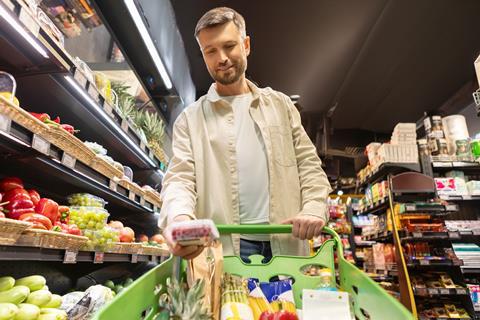Kantar figures show supermarkets responding to budget pressure with more price cuts

Rising household bills are leading supermarkets to launch more promotions.
Figures from Kantar show that take-home sales at the grocers increased by 1.8 per cent over the four weeks to 23 March, compared with one year ago. That represents the slowest rate since June last year.
Grocery price inflation rose slightly to 3.5 per cent over the same period, the data analyst found. “With prices continuing to rise, supermarkets are mindful of the need to invest to attract shoppers through their doors,” said Fraser McKevitt, head of retail and consumer insight at Kantar.
”Promotional sales ramped up this month to 28.2 per cent of total grocery spending, the highest level we’ve seen in March for four years.”
Retailers’ price cuts were responsible for £2.6 billion of promotional spending, which is 8.8 per cent more than the same time last year and significantly higher than the £686 million spent on multibuy deals and ‘extra-free’ offers.
“Despite the recent surge, we’re still some way off the promotional records hit in the wake of the financial crisis,” McKevitt continued. ”Average spending on deal in 2012 was 39.8 per cent, meaning there could still be more headroom to go. However, the market has changed a lot in that time, with the discounters holding a far higher share today than they did 13 years ago.”
Retailers’ battle to deliver value will be welcome news for households who remain worried about their financial situation, McKevitt noted. While the number of people reported as financially struggling has fallen from its recent peak, it still accounts for almost a quarter (22 per cent) of the country.
The rising cost of groceries ranks third on the list of concerns keeping consumers awake at night, just behind energy bills and the country’s overall economic outlook, he added.
New milestone for Aldi
As Aldi prepares to celebrate the 35th anniversary of its first UK store opening on 5 April, its share of the grocery market has hit 11 per cent for the first time. That is up 0.3 percentage points from last year, and its sales grew by 5.6 per cent, which is the fastest rate for Aldi since last January.
Lidl’s sales rose by 9.1 per cent, taking its market share to 7.8 per cent, 0.4 percentage points higher than one year ago. Lidl attracted 385,000 more shoppers last month, more than any other grocer, and it saw a double-digit rise in footfall.
Ocado was again the fastest-growing grocer, a position it has held for the last 11 months, as its sales increased by 11.2 per cent. For the first time, the online retailer took a 2 per cent portion of the market. Spending on groceries at M&S increased by 13.1 per cent, on top of M&S goods sold through Ocado.
Tesco boosted spending through its tills by 5.4 per cent, nearly half a billion pounds more than the same period a year ago. Britain’s largest grocer made the biggest share gain, with its portion climbing from 27.3 per cent to 27.9 per cent. Sainsbury’s reached 35 consecutive periods of year-on-year growth, with sales up by 4.1 per cent as it grew ahead of the market. Its share nudged up to 15.2 per cent.



